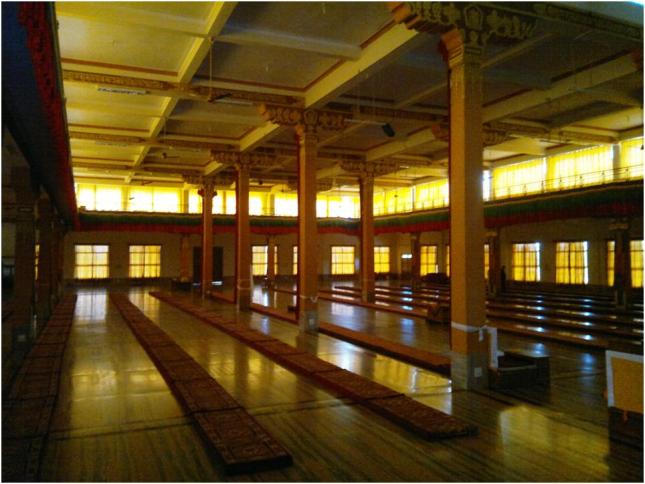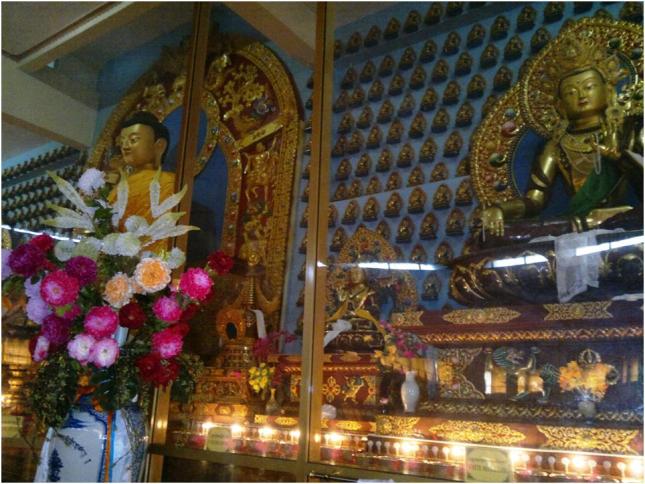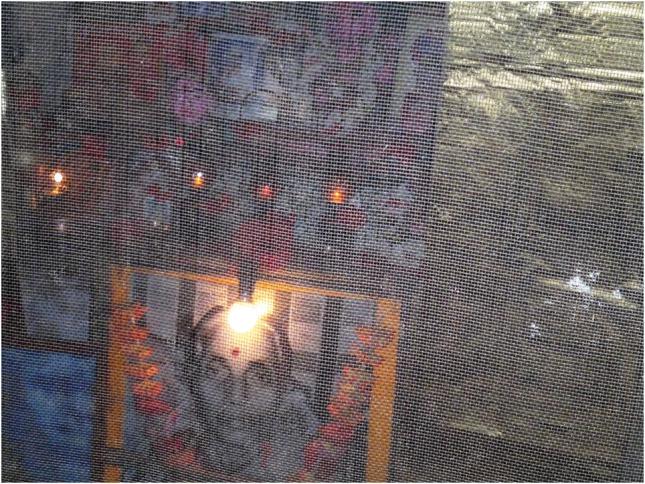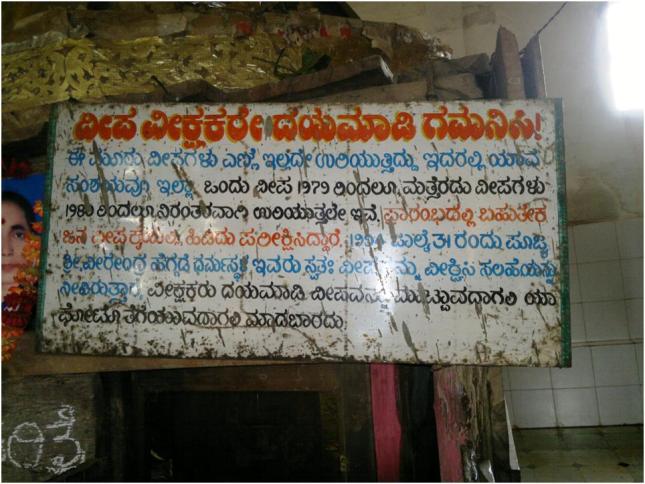We had been planning to see the Doeguling Tibetan Settlement near Mundgod for a long time – it is around 130 km from Sagar. Ratna and I keep coming to Sagar regularly now – once every 5 or 6 weeks – and stay in our beautiful home here. Finally, on 7th July, the great day came and we set off in the morning. Ratna’s younger brother Gopalakrishna (we call him Gopali), and her elder brother’s wife Shailaja and her daughter Deepthi joined us. We went to Padavagod (the village where Ratna was born and where they all stay) and picked them up and then set off around 9:30. We packed some “vegetable pulav” and lots of water and some snacks for the journey.
The Corolla, with its new tyres, was running like a charm. The car is remarkable – 6 years + old, has run 1,26,000 kms, and is still as good as new (except for some scratches and dents). Totally trouble-free, the engine purrs and delivers power smoothly and effortlessly – I love this car!
The monsoon is fully on, and this area is known for heavy rains. The morning was overcast, and Ratna was a bit worried. We went via Sagar – Siddapur – Sirsi, and reached Sirsi by 10:45 am. It started raining pretty heavily from there on, but we were snug and safe in the Corolla and didn’t have any problem. All through, I was playing old Hindi songs from my Nokia N8 – it has a built-in FM transmitter, and we can hear the songs on the car radio!
From Sirsi, Mundgod is around 50 kms, and we found our way to the settlement by 11:45. We started seeing the Buddhist monks right from Mundgod town – the settlement is around 5 km outside the town. They were walking in twos and threes with umbrellas held high, in their red robes, all over the town.
I checked up on the Internet – the Government of Karnataka gave 4000 acres of forest land to these homeless Tibetans when they landed here, in 1966. They have built three major monasteries, and have developed settlements where families live, and even do a lot of agriculture. I believe there are more than 2000 monks, and the families and others number probably around 20000.
It was pretty difficult to know where to go. The place is neat, clean, well-laid out, with concrete roads. But no signs pointing to places of interest. We kept asking passing monks where the “temple” was, and finally they directed us to a huge structure. Once there, we found a giant prayer hall where we expected the temple to be, but all the doors were closed. Finally a monk tapped on a side door, and another monk inside let us in.

The huge prayer hall has, on one wall, several very large images of the Buddha – different “Buddhas” like medicine Buddha, etc. The central statue is the largest, and in front of it there is a very large “throne” with a life-size photo of the Dalai Lama kept on it as if he is sitting there. The monk told us the Dalai Lama visits here once a year.
The photo below is taken using the Panorama app on the Nokia N8:

The prayer hall, with long rows of mats where they sit for prayer:

Some views of the inside:


This is how the main door looks like. Shailaja, Deepthi, Ratna and Gopali are standing here.

The temple looks like this from the front:

The view from the temple, opposite it, using Panorama:

Some close-ups of structures from the view above:

One more:

And another:

Beautiful flowers with the temple in the background:

After we went around, we had a picnic lunch at the basement parking area of the temple, and then set off back. We had been told there is a temple around 10 km from Sirsi where a lady had lit 3 lamps in 1979 and which were still burning, without anyone filling up oil into them – it is known as a miracle in that area. We went to visit that place. This lady was a very pious lady belonging to the goldsmith caste. The temple consists of the original room which was the puja room in that house, and the rest of the mud house has been knocked down and a concrete structure built around it later. The approach road to the little village with these miraculous lamps is pathetic. The place has been visited by several dignitaries including the Dalai Lama.
Here are some photos of the puja room with the lamps. The three lined up the middle are the eternal ones. The photo is very dim because there is a steel mosquito mesh fitted to the door, probably to allow people to see in and yet allow air (and of course oxygen) inside.

The one on the left is one that is lit every day by the Pujari. The photo with an electric lamp above is that of the lady who lit the three lamps. The photo below is of a signboard in Kannada explaining the story:

So after visiting this, we drove back to Padavagod to leave our relatives home before returning ourselves to our Sagar home. On the way back, we continued to enjoy some really wonderful old Hindi songs.
One hallmark of the landscape of the entire journey is the wonderful lush greenery. This whole Sagar / Sirsi area is very green with dense forests. It is a pleasure to drive through them – a feast for the eyes!